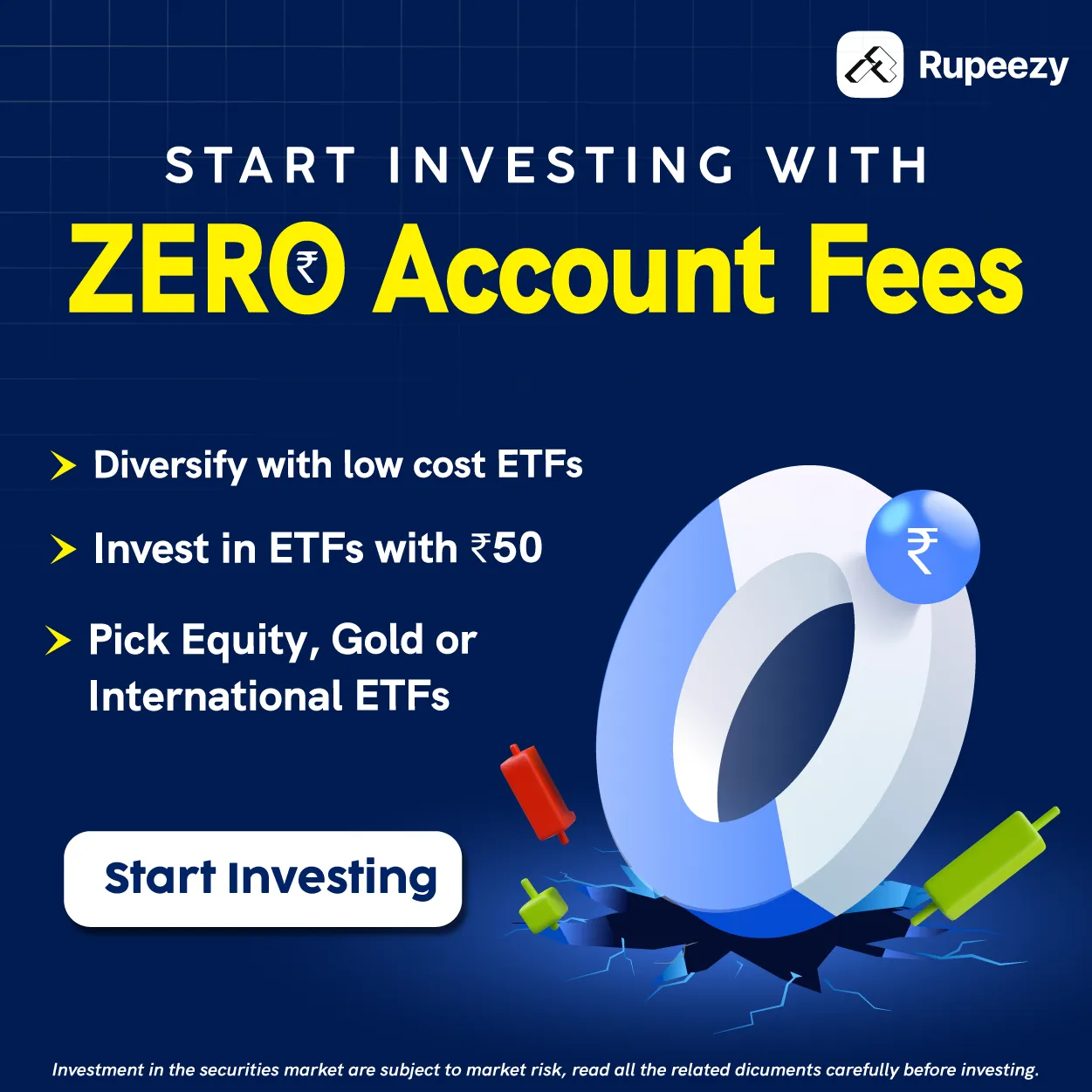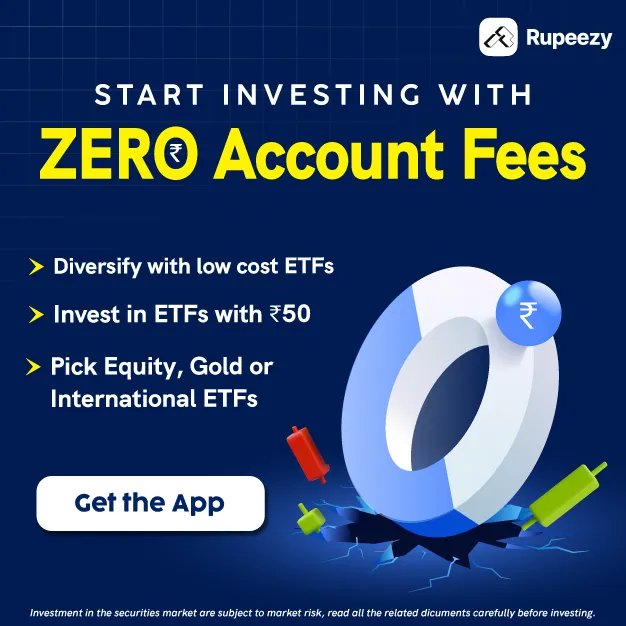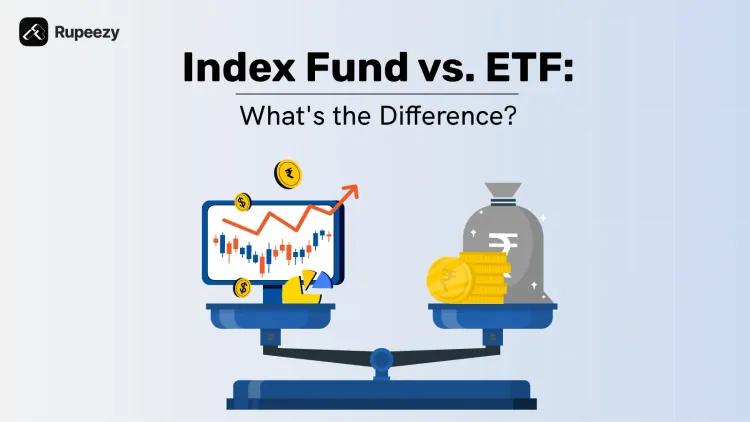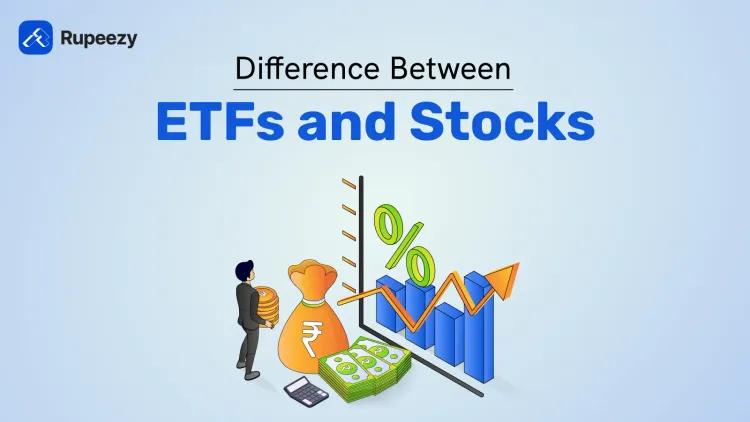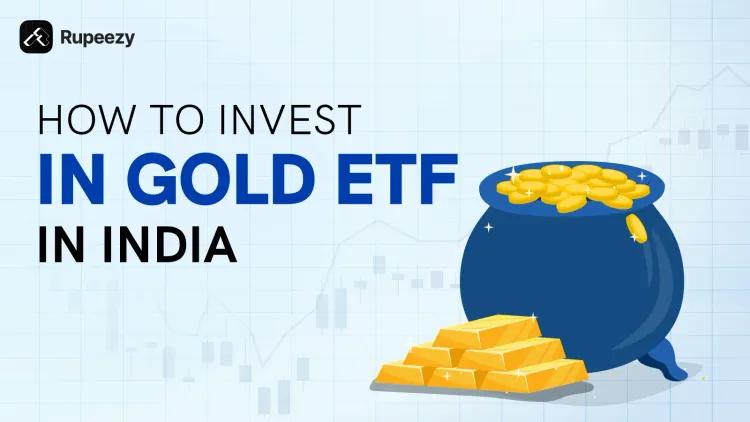What are Commodity ETFs? Types, Taxation and Top 10 Picks


00:00 / 00:00
Nowadays, along with the stock market, investors are also showing interest in commodities like gold, silver and crude oil. In such a situation, commodity ETFs have emerged as an easy and smart option, which gives you an opportunity to earn profit from the prices of commodities without buying them physically. In India too, commodity ETFs are becoming increasingly popular because they provide an opportunity to invest with low risk and better transparency. This is a good way to bring balance to the portfolio for both new and experienced investors.
What is a Commodity ETF?
Commodity ETF (Exchange Traded Fund) is an investment option that tracks the price of a particular commodity or commodity index. This means that if the price of that commodity increases, the value of the ETF also increases accordingly. These ETFs can be bought and sold in the stock market just like stocks. In this, you do not buy gold, silver, or crude oil physically, but invest in units related to that commodity.
Most of the Gold ETFs and Silver ETFs are currently available in India, but options like Crude Oil, Natural Gas, and Agricultural Commodities are also popular in the international market. Regular ETFs usually track shares or indexes, while commodity ETFs track the price of a commodity. With this, investors can earn profits from fluctuations in commodity prices without the tension of storage or insurance.
How do Commodity ETFs Work?
The purpose of a commodity ETF is to track the price of a particular commodity and give similar returns. How does this happen? Let's understand in simple points:
Physical-based ETF: In this, the fund house actually buys that commodity, like gold bars or silver. These commodities are stored in a safe place.
Futures-based ETF: In this, the fund does not buy the commodity directly, but invests in futures contracts. This method is more common for international commodities (such as crude oil).
Tracking error: The return of an ETF may sometimes be slightly different from the actual price of the commodity. This difference is called tracking error.
Roll over and roll cost: When the futures contract expires, it is converted into the next month's contract. The cost incurred in this process is called roll cost.
How is the price of an ETF decided?
The price of an ETF is decided according to its NAV (Net Asset Value) and market demand. It can be bought and sold on the exchange like shares.
In this way, commodity ETF is an investment option that gives investors an opportunity to connect with the commodity market with transparency and convenience.
Types of Commodity ETFs
There are many types of commodity ETFs, which investors can choose according to their strategy and risk appetite. Below are the major types:
1. Single Commodity ETF: These ETFs focus on a single commodity, such as the Gold ETF, Silver ETF, or Crude Oil ETF internationally. Gold and silver ETFs are currently the most common in India. Examples: Nippon India Gold ETF, ICICI Prudential Silver ETF
2. Multi-Commodity ETF: These include multiple commodities (such as metals, energy and agriculture) in a single basket. These are more popular in the international market.
3. Equity-Based Commodity ETF: These ETFs invest in shares of companies that operate in the commodity sector, such as mining, oil, or agri-processing companies. Their returns are not directly linked to commodity prices but to the performance of companies.
In India, currently, mostly single-commodity ETFs are available, mainly gold and silver focused ETFs. As the market matures, other types are likely to emerge.
List of Commodity ETFs in India 2025
There are many excellent options available for investing in commodity ETFs in India. Below is a list of top ETFs with their latest performance, AUM (Assets Under Management), and Expense Ratio:
Name of the ETF | AUM (Rs. Crore) | 1-Year Return (%) | Expense Ratio (%) |
Rs.20783.15 Cr | 31.0 | 0.82 | |
Rs.4798.65 Cr | 33.45 | 0.40 | |
Rs.7167.11 Cr | 31.23 | 0.55 | |
Axis Gold ETF | Rs.1,660.77 Cr | 31.04 | 0.56 |
Overview of Best Commodity ETFs in India
1. Nippon India ETF Gold BeES
This ETF is one of the most traded gold ETFs in India. It has very good liquidity, allowing investors to buy and sell easily. Investors get direct exposure to gold prices through this ETF, as its portfolio is invested in pure gold. Although the expense ratio is slightly high, it is considered necessary to reduce tracking error.
2. ICICI Prudential Silver ETF
This is a major means of investing in silver. Its focus is on following the prices of pure silver. Due to low expense ratio and good management, this ETF is especially suitable for investors who want portfolio diversification through silver.
3. Kotak Gold ETF
Kotak Gold ETF is known for its reliability and stability among investors. Its structure is such that it accurately reflects the fluctuations in gold prices. Apart from this, the strong backing of Kotak AMC makes this ETF a reliable option.
4. Axis Gold ETF
The Axis Gold ETF is popular for its competitive fees and superior tracking performance. It is suitable for investors who want low-cost exposure to gold while also preferring good liquidity. The structure of this ETF works like a physical investment in gold, allowing investors to directly benefit from the price of gold.
When choosing a commodity ETF, do not just look at returns or AUM, but also check their tracking error, expense ratio, and credibility of the fund house. The right ETF can make your investment safe and profitable.
Commodity ETFs vs Direct Commodity Investment
There are two main ways to invest in commodities: buying physical commodities directly (like gold, silver) or investing through commodity ETFs.
Aspect of comparison | Commodity ETFs | Direct Commodity Investment |
Ease of trading | Can be bought and sold in the stock market, instant transactions possible | Physical trading and futures require more effort and time |
Security and Storage | No physical storage issues, funds stay safe | Keeping gold and silver safe can be expensive and risky |
Transparency | Price tracking is done directly of the commodity, clear reporting on investments | Pricing depends on supply-demand of the market, transparency is low |
Liquidity | High liquidity, easily sold on exchange | Selling physical commodities can take time, futures are more volatile |
Risk | Market risk but low physical risk | Market risk as well as storage and fraud risk |
Commodity ETFs offer investors a simple, secure, and transparent way to invest, while direct investments involve more effort, storage, and fraud risk. Therefore, commodity ETFs may be a better option for small and medium investors.
Taxation of Commodity ETFs in India
The taxation of commodity ETFs is slightly different from that of common shares or mutual funds. Especially, gold and silver ETFs are considered non-equity mutual funds. This means that the tax rules applicable to these ETFs are also special.
Key taxation points:
If the ETF is held for less than 12 months, the profits will be treated as short-term capital gains (STCG), which will be taxed as per your income tax slab.
If the ETF is held for 12 months or more, the profits will be taxed as long-term capital gains (LTCG) at 20% with indexation benefit. Indexation reduces the impact of inflation, resulting in lower taxes.
The tax rules are given in the table below:
Holding Period | Type of tax | Tax Rate | other details |
Less than 12 months | Short-Term Capital Gain (STCG) | As per your income tax slab | The entire income is taxed |
12 months or more | Long-Term Capital Gain (LTCG) | 20% (with indexation) | Tax decreases after adjusting for inflation |
Points to note:
These rules apply to Gold ETFs and Silver ETFs.
Direct commodity investments, such as physical gold or commodity futures, may have different tax rules.
It is important to consult your financial advisor before investing to understand taxation issues properly.
How to Include Commodity ETFs in a Diversified Portfolio
Understanding Diversification: A diversified portfolio means investing in different asset classes so that the overall investment is not affected much by the fluctuations of a single sector or market. Commodity ETFs along with equity, debt and real estate further strengthen this diversity.
Role of Commodity ETFs: Commodity ETFs, like gold or silver ETFs, are assets that have a low correlation to the equity market. That is, even when the stock market falls, these funds can perform stable or positively. This is why adding them to the portfolio is an effective way to balance risk.
Smart Entry through SIP: Investing small amounts every month in commodity ETFs through SIP is a smart move. This gives the benefit of average costing in the long term while avoiding market fluctuations.
How to fit it into your portfolio?
Asset Class | Recommended allocation (example) |
Equity | 60% |
Debt | 25% |
Commodity ETFs | 10% |
Liquid Funds/Cash | 5% |
Note: This is an example; the ratio may change based on your goals, age and risk profile.
Periodic review of asset allocation: Once you add commodity ETFs to your portfolio, it is important to review your portfolio once a year or every six months. If the prices of gold or silver have increased significantly, their proportion in the portfolio may also increase in such a case, it is important to rebalance it.
What Analysts Look for in a Good Commodity ETF
Market experts look at several important aspects when choosing a good Commodity ETF:
Low Expense Ratio: A good ETF is considered to be one that has a low Expense Ratio. That is, the lower the fee to be paid to the AMC for fund management, the better the impact on your returns.
Tracking Accuracy: The job of an ETF is to follow its benchmark index. A good ETF is the one that tracks its index with the least difference. This is measured by tracking error, the lower, the better.
Liquidity and Trading Volume: If an ETF has good daily trading volume, it is easy to buy and sell it. Exiting while investing in a less liquid ETF can be difficult.
Historical Performance: Although past performance is not a guarantee of the future, it is still important to see how the ETF has performed in the last 3–5 years. This gives an idea of ??the stability of the fund and the quality of management.
Balance of demand and supply: The prices of commodities depend on their demand-supply cycle. If the global demand for gold increases, then the gold ETF can also go up. Analysts analyze this factor in depth.
Credibility of the fund house: The credibility of the AMC managing the ETF also matters. For example, an ETF linked to an experienced fund house like HDFC, ICICI Prudential, or Nippon India gives more confidence to investors.
Other parameters like AUM and Volatility: The higher the total AUM (Asset Under Management) of the ETF, the better it is considered as it shows the confidence of investors. Also, the volatility of the ETF is also an important indicator for analysts.
When you select ETFs based on these parameters, not only does your portfolio become stronger, but the chances of better returns in the long term also increase.
Conclusion
Commodity ETFs are becoming a smart choice for investors, especially those who want diversification and stability in their portfolios. These ETFs provide protection against inflation and operate in a direction independent of the fluctuations in the equity or debt markets. With options like gold, silver and multi-commodity ETFs in India, investors can now easily participate in commodities as well. Investing with the right information, research and understanding can pave the way for better returns and a balanced portfolio in the future.
FAQs
Q. What is the best commodity ETF?
In India, ICICI Prudential Silver ETF and Nippon India Gold ETF are considered to be the best commodity ETFs. These funds are known for their low expenses and good track record.
Q. What is an ETF commodity?
A commodity ETF is an exchange-traded fund that tracks the price of a single commodity (such as gold, silver) or a commodity index. Investing in it is as easy as buying shares.
Q. Is there any crude oil ETF in India?
There is currently no direct Crude Oil ETF available in India. However, one can invest in Global Crude Oil ETFs through some international investment platforms.
Q. What is the risk of a commodity ETF?
Commodity ETFs are subject to risks such as price volatility, global geopolitical events and tracking errors. Therefore, research is important before investing in them.
Q. Do commodity ETFs pay dividends?
Most commodity ETFs do not pay dividends. Their purpose is to follow commodity prices and not to generate regular income.
Check Out These Related Articles |
The content on this blog is for educational purposes only and should not be considered investment advice. While we strive for accuracy, some information may contain errors or delays in updates.
Mentions of stocks or investment products are solely for informational purposes and do not constitute recommendations. Investors should conduct their own research before making any decisions.
Investing in financial markets are subject to market risks, and past performance does not guarantee future results. It is advisable to consult a qualified financial professional, review official documents, and verify information independently before making investment decisions.

All Category

